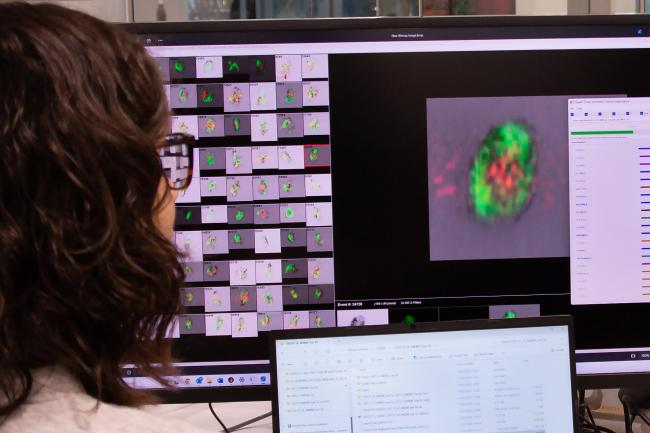
Awarded for ‘Editors’ Choice - Best Use of HPC Application in Life Sciences’ the Earlham Institute (previously TGAC) has been accoladed for its research analysing the highly-complex wheat genome, using the SGI UV 300 - SGI's largest instance for life sciences.
EI uses state-of-the-art HPC platforms and bioinformatics software in response to the pressing global issue of food security. With one of the largest SGI UV 2000 instances worldwide (boasting 20TB of shared RAM) and the latest SGI UV 300 platform (including 32TB of NVMe SSD technology), EI crop researchers are able to assemble some of the largest and most complex genomes to date, including the 17Gb bread wheat genome, in a matter of weeks, compared to months for more traditional distributed-memory HPC systems.
Currently, the staple crop faces unprecedented problems, including rising demand due to major population increases and urban mobility, global climate change, rising energy costs and land, water and nutrient limitations. With an estimated yearly production of 750 million tons, finding and implementing these solutions for wheat is a top priority for governments and scientists worldwide.
Head of Scientific Computing at EI Dr Tim Stitt on the prestigious award, said: “It’s fantastic to be recognised for our data-intensive computing capability in a public forum from such a popular publication in the HPC community. To win this award ahead of other great entries spanning the worldwide HPC community is a tremendous achievement for our relatively small research institute in Norfolk, UK. This will definitely motivate our HPC team, and our partners such as SGI, to continue to push the boundaries of data-intensive computing in tackling the tremendous challenges around large and complex genome analysis to advance global food security and sustainability.
SGI Chief Operating Officer, Cassio Conceicao, added: “SGI is truly delighted that EI has won such a prestigious award in this increasingly competitive and fast growing sector of genomics applied research. This Editor’s award for ‘Best Use of HPC Application in Life Sciences’ provides compelling testimony to the outstanding research effort and capabilities on display at the research institute. We remain a proud partner to EI, having now provided several generations of large shared memory SGI UV architectures to help enable the Institute to tackle some of the world’s largest sustainability challenges--specifically food production. Congratulations!”
Winners were revealed at the HPCwire booth at the SC16 event, and on the HPCwire website, located at www.HPCwire.com.
The coveted annual HPCwire Readers’ and Editors’ Choice Awards are determined through a nomination and voting process with the global HPCwire community, as well as selections from the HPCwire editors. The awards are an annual feature of the publication and constitute prestigious recognition from the HPC community. These awards are revealed each year to kick off the annual supercomputing conference, which showcases high-performance computing, networking, storage, and data analysis.
"From thought leaders to end users, the HPCwire readership reaches and engages every corner of the high-performance computing community," said Tom Tabor, CEO of Tabor Communications, publisher of HPCwire. "Receiving their recognition signifies community support across the entire HPC space as well as the breadth of industries it serves. We are proud to recognize these efforts and make the voices of our readers heard, and our congratulations go out to all the winners."
















